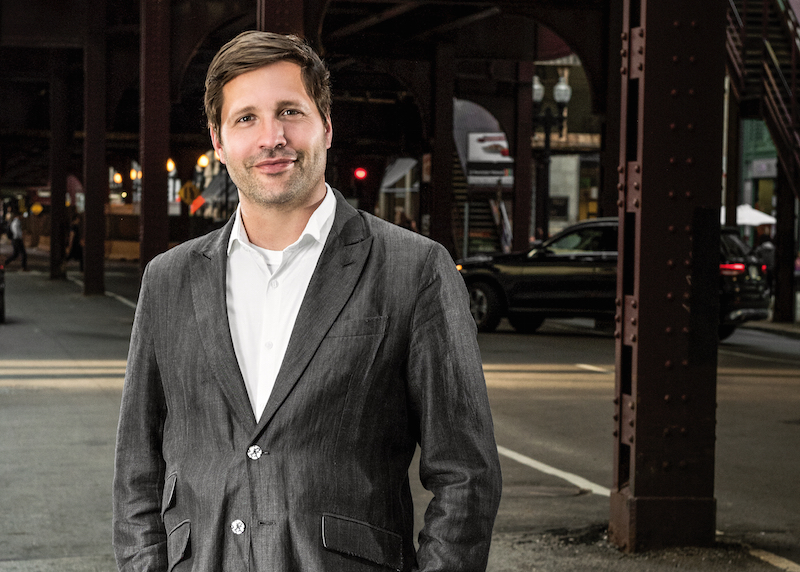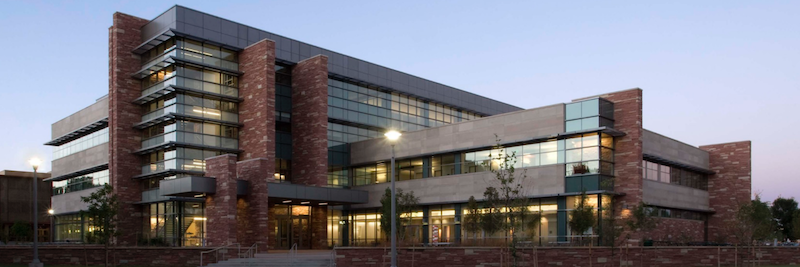Growth-minded AEC firm CannonDesign announced this morning that it will merge with Denver-based Bennett Wagner Grody Architects (BWG), a 28-year AE firm with portfolio strengths in the K-12, Higher Education, and healthcare sectors.
This alliance gives CannonDesign its first office in Colorado, and represents its second acquisition within the past few months. In September, Cannon announced that it was joining forces with Houston-based design firm FKP, whose expertise extends to healthcare, science and technology.
CannonDesign did not disclose the terms of its agreement with BWG. But Brad Lukanic, AIA, who took over as CannonDesign’s CEO 15 months ago, indicated that this deal is part of his 102-year-old company’s larger ambitions to expand by linking with strategic partners. “We’re in the mode of looking at how our practice is evolving,” he tells BD+C. “The two recent mergers are key steps” in CannonDesign’s growth framework, and are expected to help the company expand its position in the education and S+T sectors.

Brad Lukanic, CannonDesign's CEO, says his company intends to continue growing organically and through mergers with strategic partners. Image: courtesy of CannonDesign
Don Grody, AIA, a founding partner at BWG, says that about a year ago his firm started thinking about its future within a consolidating AE industry, too. It concluded that prosperity hinged on locating the right partner firm. He says the company worked up a list of 200 AE firms, and targeted 20 of them with an information piece about BWG. “CannonDesign was one of the firms that responded positively to BWG as well as to the Colorado market.”
Grody says the merger “allows us to harness new services and expertise to help our clients leverage the built environment to improve performance and create stronger futures. It gives us a very distinct perspective in the industry.”
CannonDesign has coveted a bigger presence in Denver “for a very long time,” says Lukanic. BWG’s recent projects in the state include Colorado State University’s Behavioral Sciences Building, Colorado Mesa University’s Engineering Building, and numerous projects with Kaiser Permanente. CannonDesign’s work in Colorado includes the renovation and expansion of the University of Colorado at Boulder’s Student Recreation Center, the expansion of the University of Colorado Hospital’s Anschutz Inpatient Pavilion, and the U.S. Air Force Academy’s Holaday Athletic Center.

Don Grody, one of BWG's founding principals, is in charge of innovation, quality planing, and excellence at his firm. Image: courtesy of CannonDesign
BWG’s management team, including its three principals, is staying on with the company. BWG will operate as Bennett Wagner Grody Architects | CannonDesign, and while its brand will eventually disappear, that transition process “could be fairly long,” predicts Lukanic, because Cannon Design doesn’t want to lose any of BWG’s marketing cachet.
Once its merger with BWG is completed, CannonDesign will have nearly 1,000 employees working in 19 offices in North America and abroad.
As for future expansion, Lukanic says CannonDesign is tracking markets where populations are growing and where its core business sectors are strong. He points specifically to Texas as an area where the firm wants to be a bigger player, and to construction services as an area for potential increased business.
He says that CannonDesign is also looking at “a few key international markets” for expansion, both within and outside of North America.
Lukanic believes that, by operating multiple offices, CannonDesign has a better shot at attracting and retaining the “emerging leaders” it will need to be successful in the future. Its geographic diversity “gives our people more lifestyle options.”
Related Stories
Market Data | Nov 27, 2023
Number of employees returning to the office varies significantly by city
While the return-to-the-office trend is felt across the country, the percentage of employees moving back to their offices varies significantly according to geography, according to Eptura’s Q3 Workplace Index.
Resiliency | Nov 27, 2023
All levels of government need to act to cope with climate-driven flooding and sea level rise
The latest National Climate Assessment highlights the need for local, state, and federal governments to adopt policies to mitigate the effects of climate-driven flooding and sea level rise, according to a policy expert with the National Resources Defense Council.
Data Centers | Nov 22, 2023
How is artificial intelligence impacting data center design?
As AI is reshaping how we interact with machines and the world around us, the design of data centers needs to adapt to this fast-changing landscape. So, Page pairs expert thinking with high-performing solutions to meet the needs of rapidly advancing technologies.
Cultural Facilities | Nov 21, 2023
Arizona’s Water Education Center will teach visitors about water conservation and reuse strategies
Phoenix-based architecture firm Jones Studio will design the Water Education Center for Central Arizona Project (CAP)—a 336-mile aqueduct system that delivers Colorado River water to almost 6 million people, more than 80% of the state’s population. The Center will allow the public to explore CAP’s history, operations, and impact on Arizona.
MFPRO+ New Projects | Nov 21, 2023
An 'eco-obsessed' multifamily housing project takes advantage of downtown Austin’s small lots
In downtown Austin, Tex., architecture firm McKinney York says it built Capitol Quarters to be “eco-obsessed, not just eco-minded.” With airtight walls, better insulation, and super-efficient VRF (variable refrigerant flow) systems, Capitol Quarters uses 30% less energy than other living spaces in Austin, according to a statement from McKinney York.
MFPRO+ News | Nov 21, 2023
California building electrification laws could prompt more evictions and rent increases
California laws requiring apartment owners to ditch appliances that use fossil fuels could prompt more evictions and rent increases in the state, according to a report from the nonprofit Strategic Actions for a Just Economy. The law could spur more evictions if landlords undertake major renovations to comply with the electrification rule.
Codes and Standards | Nov 21, 2023
Austin becomes largest U.S. city to waive minimum parking requirements
Austin, Texas recently became the largest city in the United States to stop requiring new developments to set a minimum amount of parking. The Austin City Council voted 8-2 earlier this month to eliminate parking requirements in an effort to fight climate change and spur more housing construction as Texas’s capitol grapples with a housing affordability crisis.
MFPRO+ News | Nov 21, 2023
Underused strip malls offer great potential for conversions to residential use
Replacing moribund strip malls with multifamily housing could make a notable dent in the housing shortage and revitalize under-used properties across the country, according to a report from housing nonprofit Enterprise Community Partners.
Giants 400 | Nov 16, 2023
Top 70 Science + Technology Facility Engineering Firms for 2023
Jacobs, Fluor, SSOE, Tetra Tech, and Affiliated Engineers head BD+C's ranking of the nation's largest science and technology (S+T) facility engineering and engineering/architecture (EA) firms for 2023, as reported in Building Design+Construction's 2023 Giants 400 Report. Note: This ranking factors revenue from all science and technology (S+T) buildings work, including laboratories, research buildings, technology/innovation buildings, pharmaceutical production facilities, and semiconductor production facilities.
Retail Centers | Nov 15, 2023
Should retail developers avoid high crime areas?
For retailers resolute to operating in high crime areas, design elements exist to mitigate losses and potentially deter criminal behavior.

















